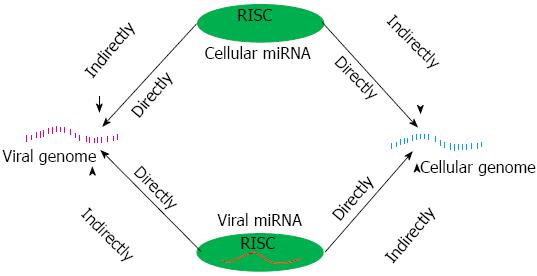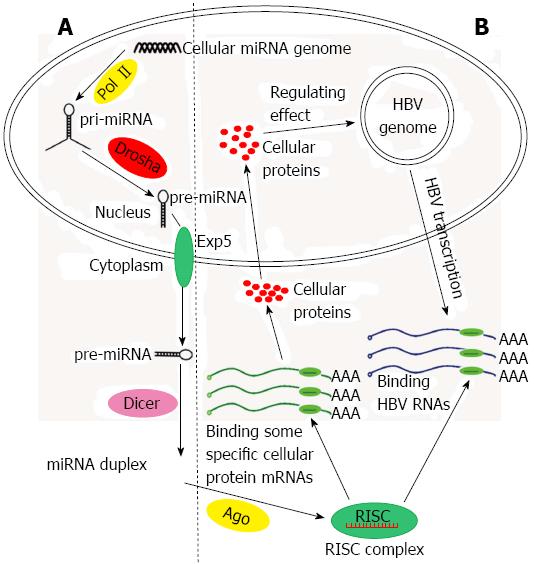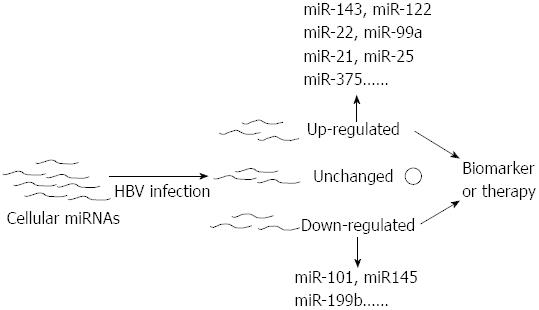Copyright
©2013 Baishideng Publishing Group Co.
World J Gastroenterol. Aug 14, 2013; 19(30): 4867-4876
Published online Aug 14, 2013. doi: 10.3748/wjg.v19.i30.4867
Published online Aug 14, 2013. doi: 10.3748/wjg.v19.i30.4867
Figure 1 Logical model of host-virus cross talk mediated by microRNAs.
Viral microRNAs (miRNAs) and cellular miRNA take part in the host-virus interactions. Moreover, viral and cellular miRNA can influence the expression of viral and cellular genome. RISC: RNA-induced silencing complex.
Figure 2 The biogenesis of human cellular microRNAs and the mechanism of the alteration hepatitis B virus gene transcription and replication.
For simplicity, not all participators are shown. A: The biogenesis of microRNAs (miRNAs); B: The mechanism of cellular miRNAs regulates hepatitis B virus (HBV) gene transcription and replication can be direct and indirect. Cellular miRNAs can target to HBV transcripts (HBV surface antigen mRNA, HBV x mRNA, DNA polymerase mRNA, etc.), causing the alteration of HBV expression. Cellular miRNAs can also target to the mRNAs of a number of key regulatory proteins (liver-enriched transcription factors, nuclear receptors, heme-oxygenase-1, DNA methyltransferases, etc.) in the process of HBV transcription and replication. Consequently, the amount of these proteins was changed, and the HBV gene transcription and replication were altered. RISC: RNA-induced silencing complex. Pol: Polymerase.
Figure 3 The aberrant expressed microRNAs and their potential use in hepatitis B virus infection.
Hepatitis B virus (HBV) infection can alter the expression profiles of cellular microRNAs (miRNAs). Except the unchanged miRNAs, up-regulated (such as miR-143, miR-122, miR-22 etc.) and down-regulated miRNAs (miR-101, miR145, miR-199b etc.) are promising for detecting and treating HBV-related diseases.
- Citation: Wei YF, Cui GY, Ye P, Chen JN, Diao HY. MicroRNAs may solve the mystery of chronic hepatitis B virus infection. World J Gastroenterol 2013; 19(30): 4867-4876
- URL: https://www.wjgnet.com/1007-9327/full/v19/i30/4867.htm
- DOI: https://dx.doi.org/10.3748/wjg.v19.i30.4867















